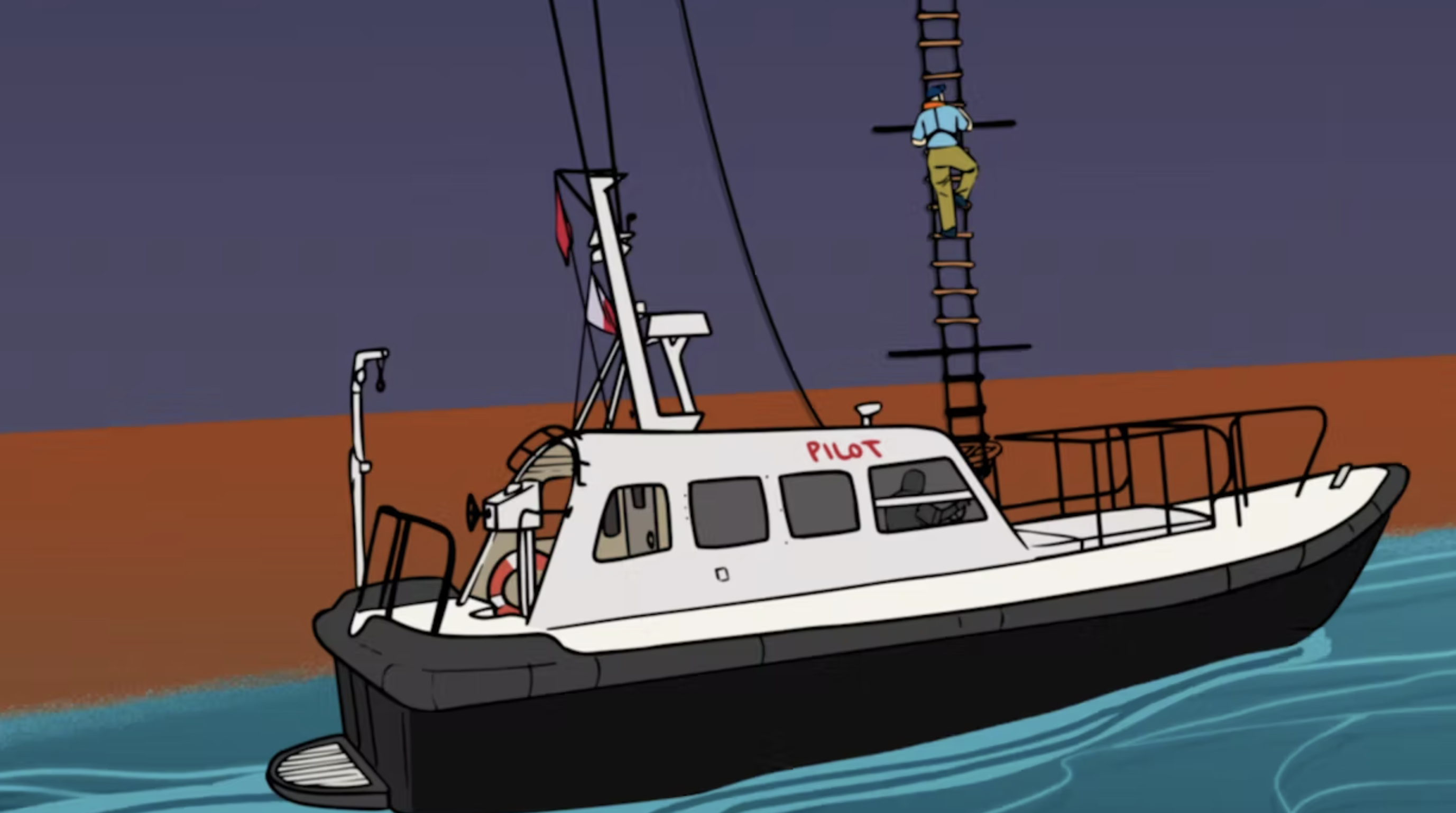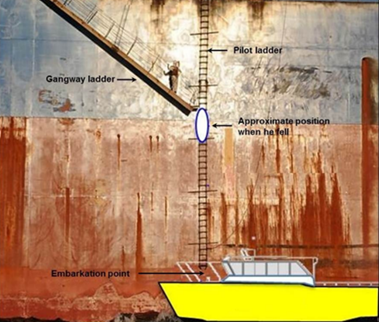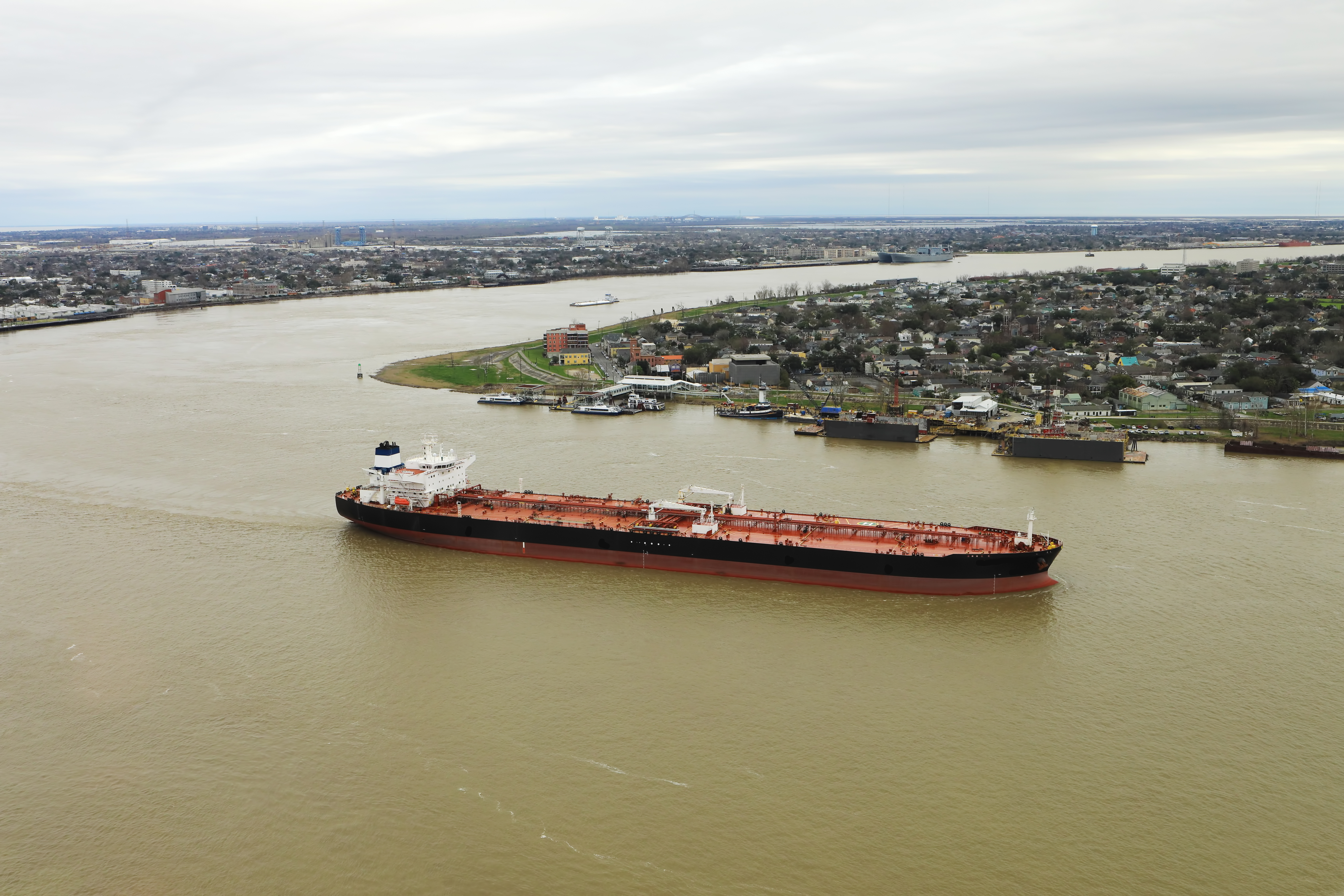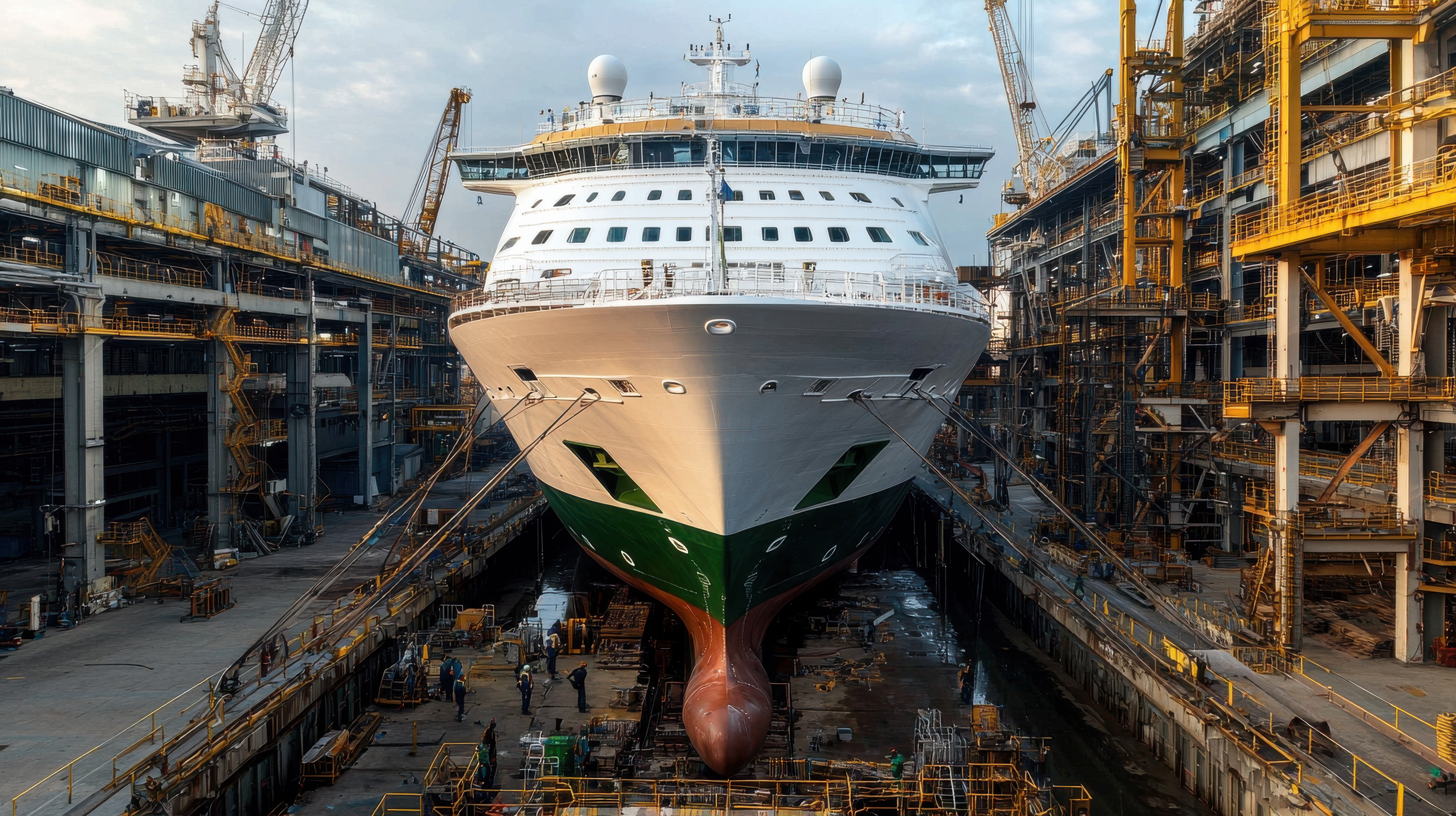
Last year, AMSA (Australia Maritime Safety Agent) issued a notice in September, and Hong Kong Marine Department issued a notice in October regarding a fall accident from a ladder. Aloft work using ladders or boarding and disembarking of pilots and related persons by pilot ladders are carried out on board, but all of these work may lead to major accidents.
Therefore, work performed using a ladder requires training and mastery of work, including the implementation of risk management.
This paper introduces the outline of the above two notices and the preventive measures for fall prevention pointed out in each of them.In addition, I would like to introduce a case of fall accidents that occurred in the past and consider measures to prevent the recurrence of accidents as well.
AMSA Marine notice 06/2021(1)
Fatal accidents from falling off pilot ladders on ships
Background
In August 2021, AMSA received notification of the death of a crewmember who fell into the water while climbing down the pilot ladder of a bulk carrier to board a crew transfer boat.
That same day, the crewmember had signed off the vessel to go home.
Managing risks
Embarking and disembarking a vessel using a pilot ladder is a high-risk activity. Failing to provide safe access can be fatal.
A risk assessment for safe transfer of people by pilot ladder, or other means, should be part of the vessel’s safety management system.
Pilot ladders and associated equipment must comply with international standards (SOLAS V/23), be certified and properly maintained.
When considering the risk of use of a pilot ladder for transfer, as a minimum, attention should be given to:
- The experience and capability of people using the pilot ladder
- The physical demands of using a pilot ladder
- Sea state and weather conditions
- The ability of a launch or other vessel to act as a platform to safely transfer people to or from a pilot ladder
- Measures to prevent falls
- Emergency response if a person using the pilot ladder falls
- Use of other means of transfer which present a lower risk in the circumstances, such as a helicopter.
Hong Kong Merchant Shipping Information Note 47/2021 2)
A fatal fall accident arising from climbing down vertical ladder
A Hong Kong registered ore carrier was en route from Cao Fei Dian, China to Port Hedland, Australia for loading cargo. During the voyage, the second engineer led the repair team through the access trunk at No.3 cargo hold forward bulkhead (the access trunk) to the duct keel for the repair work. Halfway down, the second engineer noticed that his lifeline, which was being controlled by the chief engineer outside the access trunk, entangled with the vertical ladder. Without equipping with a fall arrestor, he tried to disconnect his lanyard from the lifeline but suddenly he fell from a height of 3 metres to the stringer deck from the vertical ladder.
A rescue team was immediately organized on board. After more than an hour, the second engineer, who was in conscious state, was stretchered out of the access trunk and moved to the ship’s hospital for first-aid treatment with medical advice of the Telemedical Assistance Service (TMAS). Around six hours later, the second engineer was sent by a helicopter to the nearest port in Kaohsiung, Taiwan, for urgent treatment. Unfortunately, he was declared dead in the hospital soon after arrival.
The investigation revealed that the second engineer underestimated the risks of working aloft on the vertical ladder to untangle the lifeline from the ladder without any fall prevention. The work arrangement and cooperation of team members were inadequate to avoid the happening of the accident.
The investigation also identified that the enclosed space rescue team was not trained effectively; the master failed to request the helicopter rescue service at an earlier stage; and the atmospheric testing for enclosed space entry was not carried out by an appropriate method.
Lessons Learnt
In order to avoid recurrence of similar accidents in the future, masters, officers, and crew of vessels should:
(a) Enhance safety awareness of climbing ladders and safety of working aloft in accordance with the Code of Safe Working Practices for Merchant Seafarers;
(b) Enhance the enclosed space entry and rescue drill and training; and
(c) Enhance the determination of the need for evacuation based on the condition of a patient or injured person on board as well as strengthening effective communication with TMAS and the obligation to follow their suggestion.
Case : Fall from the pilot ladder on the bulk carrier Atlantic Princess (3)
What happened
On 3 July 2013, a company representative was boarding the bulk carrier Atlantic Princess via the ship’s pilot ladder when he fell and landed on the deck of the pilot launch below. At the time, the ship was at anchor off Whyalla, South Australia, loading iron ore from an offshore transshipment barge. The injured man was provided with immediate first aid and transported to the local hospital. However, he died later that day as a result of his injuries.
The occurrence
On 17 June 2013, the cape-size bulk carrier Atlantic Princess arrived in the Spencer Gulf, South Australia, to load a cargo of iron ore at an offshore transhipment anchorage near Whyalla. At 1040 on 3rd July, Switcher reached Atlantic Princess, passed around the ship’s stern and approached the port side combination ladder. The skipper maneuvered the launch starboard side to the ship, with its foredeck beneath the pilot ladder.
The deckhand saw that the bottom of the pilot ladder was about two rungs above the deck of the launch, which he felt was too high to climb. He gestured to the crew at the top of the pilot ladder, about 17 m above him, to lower the ladder. At about this time, the two representatives moved from inside the cabin to the foredeck.
Atlantic Princess’s boatswain (bosun), who was supervising the crew on the deck of the ship, acknowledged the deckhand’s gesture. He then instructed the crew to slacken the securing arrangements and lower the ladder.
While the ship’s crew were adjusting the height of the ladder, the representative approached the bottom of the ladder. He had a short discussion with the deckhand and then began to climb the ladder. His ascent was not communicated to the crew on board Atlantic Princess, who were still preparing to lower the ladder.
The representative was wearing a personal flotation device and was not carrying any baggage. He climbed slowly and steadily, one ladder rung at a time, holding on with both hands. As he moved up the ladder, he was sighted by the bosun who immediately instructed the crew to secure the ladder. The ladder appeared to be stable and was not seen to move at any time while the purchaser’s master was climbing it.
When the representative had climbed about 7 m up the ladder, with his head almost in line with the accommodation ladder platform, he stopped. He began gesturing with his right arm and then grasped the ladder with both hands. He remained in that position for about 4 to 5 seconds and pulled himself towards the ladder. While doing so, he called out to the crew on the deck of the ship, asking for help.
The ordinary seaman, who was standing-by at the top of the pilot ladder, heard the call for help and ran to the top of the gangway ladder. He was about to make his way down the gangway when, at 1050, he saw the representative fall from the pilot ladder and land in the centre of Switcher’s foredeck.
The deckhand immediately attended to the representative and at 1053, Switcher departed from Atlantic Princess to transport him to the hospital.
At 1120, Switcher arrived at the Whyalla Marina and the representative was admitted to the local hospital and was provided with medical treatment, but died later that day as a result of his injuries.

The port side combination ladder arrangement Source: South Australia Police with annotations by ATSB
Direct cause of the fall
The fact that he called to the deck of the ship indicates that he was having difficulty climbing the pilot ladder.
It is possible that the exertion required to climb 7 m up the vertical ladder exhausted him to the point that he could no longer maintain his grip.
Finding by ATSB
The ATSB found that while Atlantic Princess’s pilot ladder had been rigged in accordance with the relevant international requirements, no further risk assessment was carried out for the personnel transfer. The investigation also found that the company’s safety management system provided no guidance relating to actions that should be taken when less experienced personnel were to use a pilot ladder to board or disembark the ship.
In addition, there were no facilities on board the transhipment barge that could be used to provide a safe means of access between the barge and the ship for personnel transfers with the barge operator’s procedures prohibiting such transfers.
The investigation also identified safety issues relating to the content and implementation of the pilot launch operator’s safety management system.
Recurrence prevention measures
The ship’s managers have issued a fleet safety circular noting that helicopters should be used for transfers of persons other than pilots wherever possible. When this is not possible, they are required to use a safety harness while climbing a pilot ladder. These requirements are to be advised to the ship’s agent in advance.
The pilot launch operator’s safety management system has been audited and the company is working to improve the system and its implementation. The company’s personnel transfer procedures have also been updated.
Safety message
This accident highlights the fact that while pilots may be competent in the use of pilot ladders, it should not be assumed that other personnel are proficient in climbing or descending a pilot ladder, or fit to do so.
References
- MSA Marine notice 06/2021
https://www.amsa.gov.au/about/regulations-and-standards/marine-notice-062021-fatal-accidents-falling-pilot-ladders-ships
- Hong Kong Merchant Shipping Information Note 47/2021
https://www.mardep.gov.hk/en/msnote/pdf/msin2147.pdf
- ATSB Transport Safety Report, Marine Occurrence Investigation 300-MO-2013-007
https://www.atsb.gov.au/media/4891508/mo-2013-007-final.pdf





